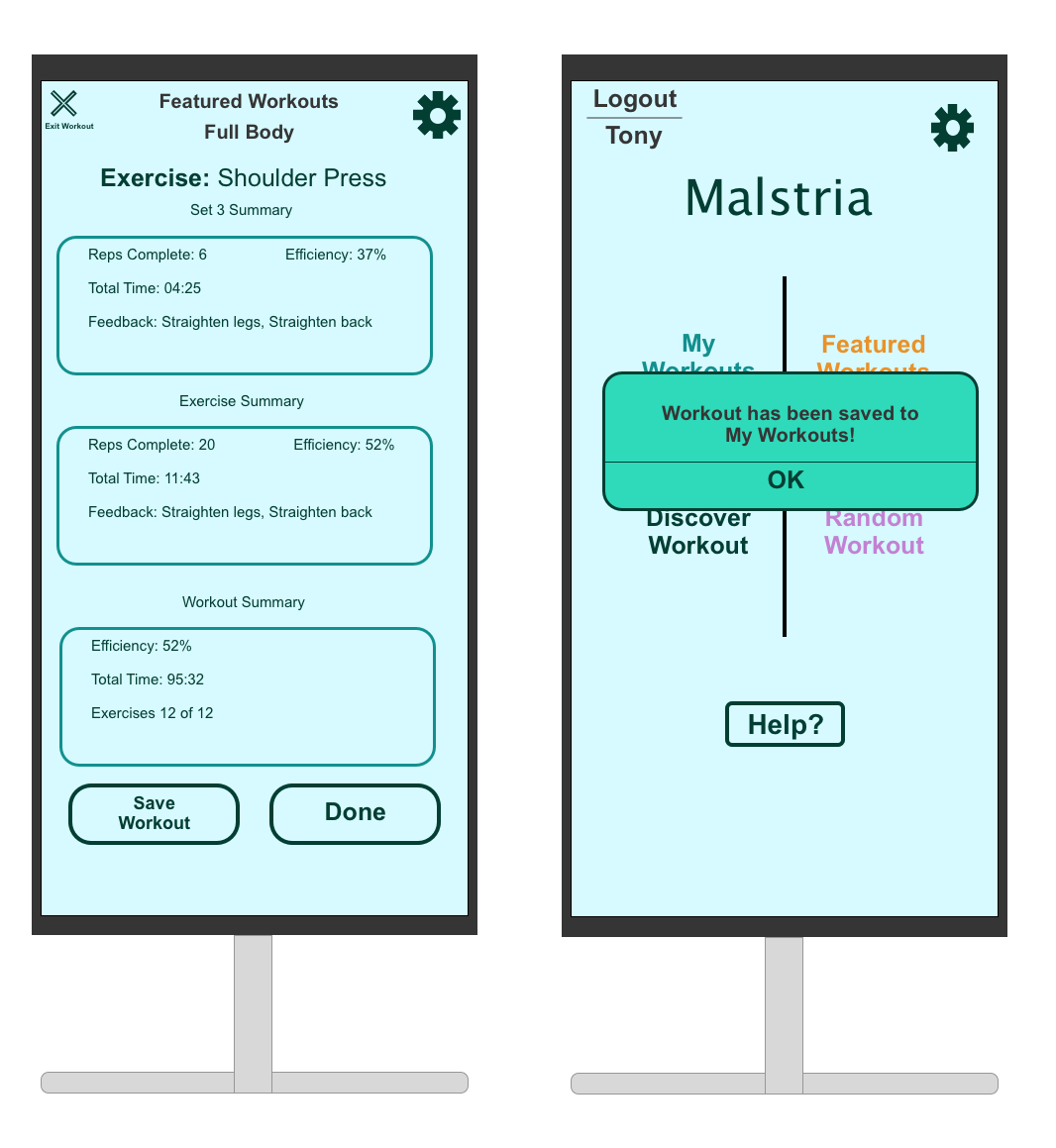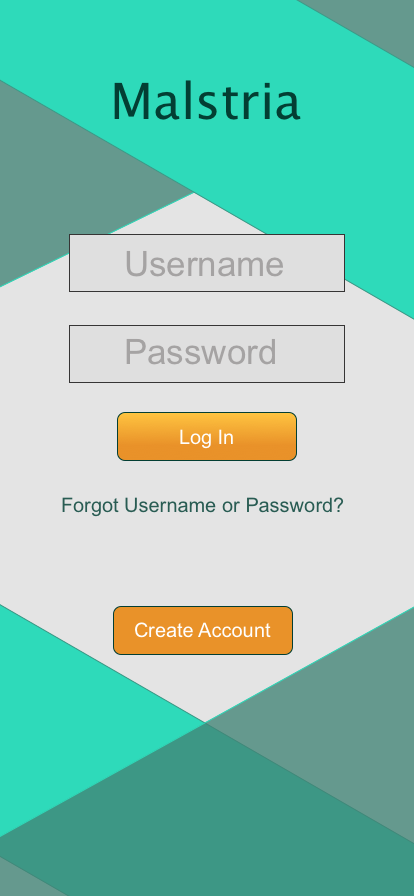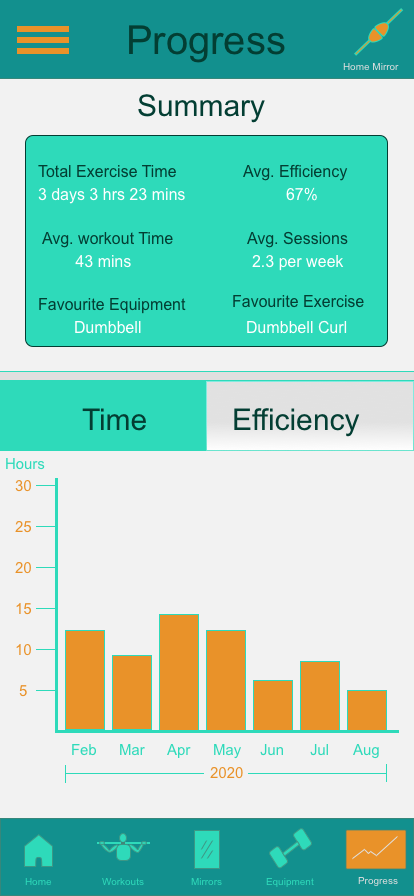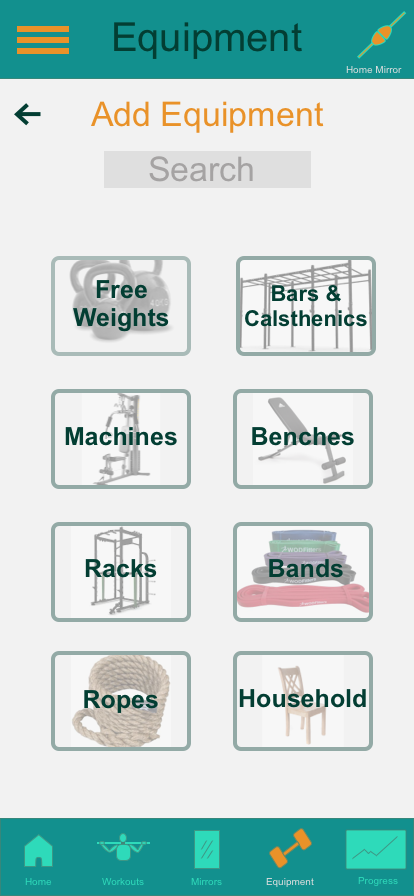Background
Malstria was designed as part of a group project for a module that focused on the fundamentals of design. The project was broken into two separate assignments, the first part was to define a problem and design a prototype in response to this problem as a group. The second assignment was to do a round 2 redesign after testing the first prototype as individuals. This page primarily covers the second prototype that I worked on as an individual.
The Problem
This project took place in the midst of a Covid-19 lockdown. One of the challenges I had experienced at this time was difficulty exercising at home given that I usually would go to a gym with a range of equipment. This reminded me of the times when I started exercising and was not sure of what I needed to do to achieve my goals and needed to repeatedly pay close attention to videos on Youtube to manage the correct form.
The Solution
The solution we came up with was Malstria. This was an exercise mirror which would allow users to input the equipment that was available to them at home and the types of exercise goals they want to achieve. Based on their input, the system would present a range of exercises that the user can do. The user could even log household items as equipment. The mirror would demonstrate perfect form to the user, imposing an opaque life-sized frame as they perform the exercise. The system would grade the user’s performance at the end of each exercise or workout. The user would be able to do quick workouts or saved workouts. The mirror could be controlled by a mobile app which would store all this information, meaning that users can connect with other Malstria mirrors and carry out new or existing workouts.
The product’s name refers to Etruscan bronze mirrors which were known as ‘Malstria’. These mirrors were both practical and luxury items and were often decorated with scenes of Greek mythology.































